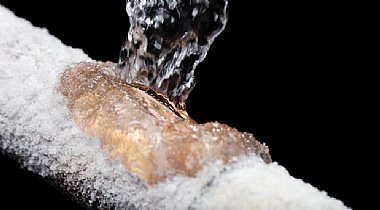Prepare Your Home For Winter
Posted on
Preparing your new home for winter can prevent damage to your home and the inconvenience (and heartache) that can be caused by winter weather, so we’ve compiled a list of things to do to make sure you keep your home warm and dry whether you’re already in your new home or if you’re waiting for your new home to be completed so still in your old one. As with all jobs around the house, make sure you carry things out only if you’re comfortable doing so and can do so safely. If in doubt, bring in a professional.
 Protect your pipes New homes have high levels of insulation and pipes are lagged to prevent frost damage, however if you’re waiting for your new home to be completed so still in an older property there are a few steps you can take. Even in new homes, you should check for any wear and tear to insulation as part of your ongoing maintenance.
Protect your pipes New homes have high levels of insulation and pipes are lagged to prevent frost damage, however if you’re waiting for your new home to be completed so still in an older property there are a few steps you can take. Even in new homes, you should check for any wear and tear to insulation as part of your ongoing maintenance.
- Insulate your loft, cold water storage tank and any pipes in your attic, they are most at risk of bursting as they are the most exposed.
- Seal any small gaps in the walls where tv and telephone lines come through.
- If you’re going away for a few days it’s a good idea to set your heating to come on for a few hours each day at a minimum of 15 degrees.
- If you’re going away for a longer period of time it may be worth draining your system completely. Getting a friend or neighbour to check your house every now and again will give you peace of mind while you’re away.
- Check you know where your stop cock is so in the event of a burst pipe you can switch off the water quickly. This is usually under the sink and turns clockwise to turn it off (remember….lefty loosey, righty tighty)!!
- If you have an outside tap, this should be isolated by turning off the supply and opening the tap to empty of any residual water which if left in the tap can freeze and cause the pipe to burst.
 Check your central heating system Making sure your system is serviced annually can ensure a toasty, trouble free winter and save on your energy bills.
Check your central heating system Making sure your system is serviced annually can ensure a toasty, trouble free winter and save on your energy bills.
- If your radiators are cold at the top and hot at the bottom you have air in the system, bleeding radiators is an easy way to make sure your home stays warm by eliminating these cold spots. Turn off your heating and have a cloth and a bleed key to hand (you can pick up a bleed key in most hardware stores and even some supermarkets). There is a valve at the top of the radiator which you should turn anti-clockwise until you hear a hiss (this is the air escaping). Hold the cloth under the valve to catch any drips and when the water starts to flow, tighten up the valve and that’s it! If you have a pressurised system, you should check the pressure on your boiler after bleeding radiators as it may need to be topped up. Your boiler manual has instructions on how to do this, ideally your pressure should sit at around one bar.
- Remember, even if you’re away for a few days, make sure your heating comes on for at least an hour a day. Most modern boilers have an in-built frost protection system but better safe than sorry.
 Avoid frost damage inside and out There’s no way to avoid frost but there are things you can do to lessen the impact it has on your home.
Avoid frost damage inside and out There’s no way to avoid frost but there are things you can do to lessen the impact it has on your home.
- Keep gutters clear of leaves twigs and dirt and give them a good clean after clearing them out, this will show if you have any blockages or leaks which may cause further damage.
- If you experience a heavy snowfall you should clear snow from guttering wherever possible as they can be damaged under the weight.
- Check your roof for any missing or cracked tiles and have them seen to if necessary
- Check external finishes for deterioration or cracks which could hold water, if this freezes and expands it could cause further damage and allow water into your home.
Prepare your garden It’s not just your house that can be affected by the winter weather, there are a few tasks in your garden which will help come springtime and can prevent further damage.
- Check fences and sheds and if any repairs are needed have them carried out before the weather worsens, check for loose slats and panels which could be damaged in high winds or worse, cause injury if they come loose.
- Store anything away that could potentially be blown around in high winds. Small items in high winds can be dangerous
- Clear up leaves in your garden to avoid blocked drains.
- Feeding your lawn after the last cut of the year will give you a healthier lawn come springtime.
